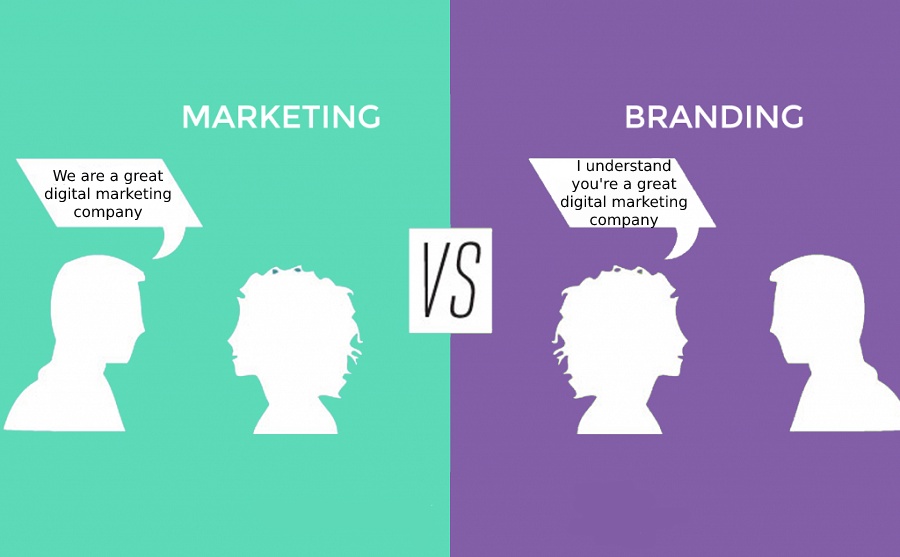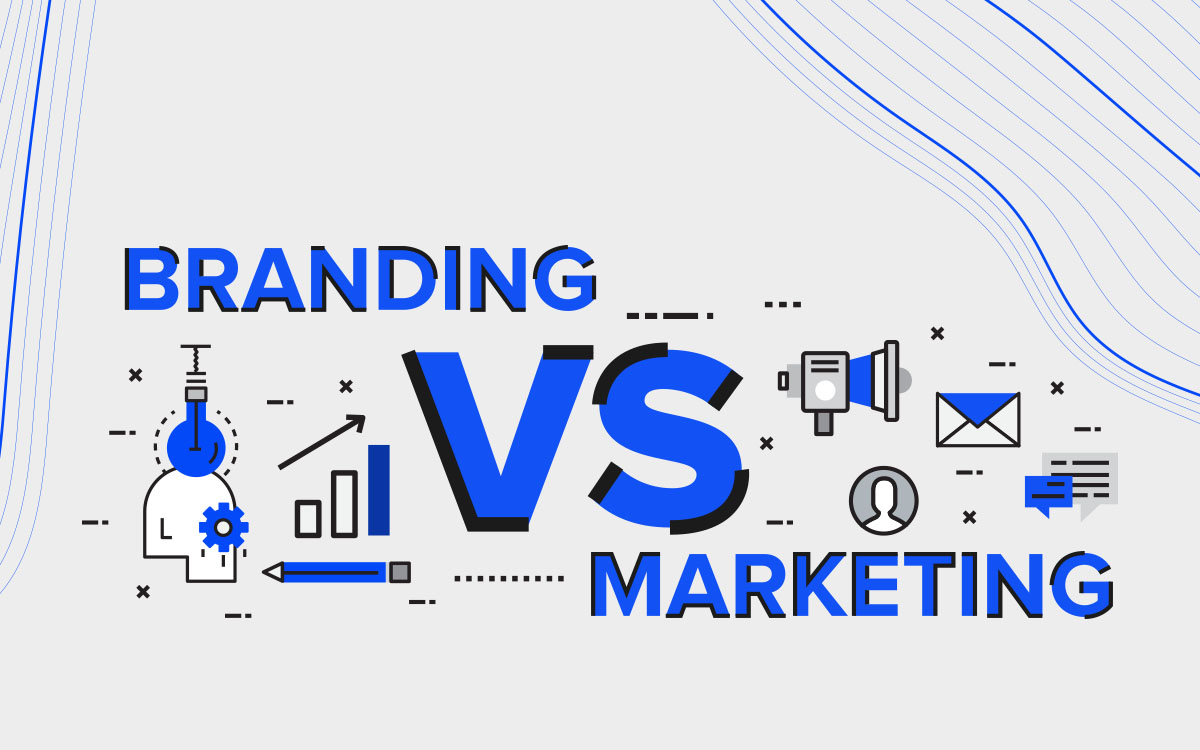Introduction
Brand Vs Product Marketing: In today’s competitive and rapidly evolving marketplace, businesses face a crucial challenge: how to position themselves and their offerings in a way that resonates with consumers while driving long-term loyalty and growth. At the heart of this challenge lies the strategic distinction between brand marketing and product marketing. Although both disciplines aim to communicate value and drive sales, they approach these goals from fundamentally different angles. Understanding this distinction—and how to balance the two—is essential for organizations that want to stay relevant, inspire customer trust, and compete successfully in any industry. Please visit

The Core Essence Of Brand Marketing
Brand marketing focuses on shaping and maintaining the overall perception of a company or organization in the minds of its target audience. It is not centered on a single offering, but rather on creating a consistent image and emotional connection that spans all customer touchpoints. The essence of brand marketing lies in storytelling, visual identity, tone of voice, values, and purpose. It’s about answering the question: “Who are we, and what do we stand for?” A strong brand identity allows businesses to build trust, command premium pricing, and foster long-term customer relationships that go beyond the functional value of their products or services.
Unlike campaigns that revolve around short-term product launches, brand marketing is a long-term strategy. It involves shaping customer perceptions through consistent communication, emotional resonance, and repeated exposure. Platforms such as television ads, social media storytelling, influencer partnerships, and corporate social responsibility initiatives are commonly used to reinforce brand identity. In many cases, consumers make purchasing decisions based not just on what a company sells but on how they perceive the company itself. A strong brand evokes a sense of familiarity and reliability, making it easier for businesses to introduce new products, expand into new markets, and weather crises.
The Tactical Focus Of Product Marketing
While brand marketing is about the broader company identity, product marketing zooms in on specific offerings. It focuses on understanding a product’s unique value proposition, positioning it within a competitive landscape, and ensuring its success in the market. Product marketers work closely with product managers, sales teams, customer success departments, and marketing channels to ensure that every aspect of the product’s lifecycle is supported by strategic messaging and tactical execution. Product marketing answers the questions: “What is this product, who is it for, and why should they care?”
Effective product marketing involves extensive market research, competitor analysis, customer segmentation, product messaging, pricing strategy, and go-to-market planning. Unlike brand marketing’s emotional appeal, product marketing is often more functional and practical. It emphasizes features, benefits, use cases, and outcomes. It speaks directly to customer pain points and explains how the product addresses them. Launches, demos, how-to videos, customer testimonials, datasheets, and product-specific email campaigns are common tactics in this domain. The success of product marketing is often measured by metrics such as product adoption rates, conversion rates, and revenue attribution.
The Emotional Vs Rational Divide
A critical distinction between brand and product marketing lies in their approach to emotional versus rational appeal. Brand marketing taps into emotions, values, and beliefs. It strives to connect with audiences on a human level, building a story that customers can relate to. Emotional appeal drives brand affinity and loyalty, even when alternatives are cheaper or more accessible. For example, when people buy luxury fashion or support environmentally conscious companies, they are often making decisions rooted in identity and values, not just utility.
In contrast, product marketing leans more heavily on logic and rationality. It focuses on explaining how a product works, how it solves a problem, and why it is better than alternatives. This kind of communication appeals to the analytical side of the consumer’s brain. When a customer is choosing between software platforms, they may compare features, pricing tiers, and support options in a very methodical way. Both types of appeal are essential, but their application depends on the context and goals of the campaign.
Short-Term Activation Vs Long-Term Equity
Brand Vs Product Marketing: Brand marketing is fundamentally about building equity. It aims to create a durable, favorable impression that will influence buying behavior over the long term. Even if a consumer does not purchase immediately, positive brand associations can lead to future sales, repeat business, and referrals. Brand equity is an intangible asset that adds value to a company over time. It also provides a buffer during periods of uncertainty or negative publicity. Companies with strong brand equity enjoy greater resilience and customer retention.
Product marketing, on the other hand, is more about short-term activation. It focuses on driving immediate action—conversions, sign-ups, purchases, or usage. While product campaigns can certainly contribute to the brand over time, their primary goal is to generate measurable results within a specific timeframe. Seasonal promotions, product launches, and limited-time offers are typical examples. The effectiveness of product marketing is more directly tied to performance metrics and often has a clearly defined ROI.
The Intersection: How Brand And Product Marketing Support Each Other?
Brand Vs Product Marketing: Although brand and product marketing differ in focus, the two are not mutually exclusive. In fact, they are most effective when integrated strategically. A compelling brand provides a strong foundation for product marketing efforts, making it easier to gain attention and establish credibility. Conversely, successful product marketing reinforces the brand by delivering on promises and generating positive customer experiences. The alignment between the two ensures consistency across all messaging and channels, which is crucial for building trust and recognition.
For example, a tech company may use brand marketing to communicate its mission of making innovation accessible to all. This overarching narrative becomes a lens through which individual products are positioned. When launching a new smartphone, product marketers can highlight how its affordability and features reflect the company’s broader mission. In this way, the product becomes an embodiment of the brand. This synergy creates a cohesive customer journey where the brand and product reinforce each other at every touchpoint.

Organizational Structure And Team Dynamics
Brand Vs Product Marketing: Brand and product marketing often reside in different parts of an organization, and their success depends on collaboration. Brand marketing may be managed by a corporate or brand team, focused on high-level messaging, visual identity, partnerships, and public relations. Product marketing typically falls under a product or go-to-market function, working closely with product development and sales. Despite their different reporting structures, the two teams must align on core messaging, audience insights, and strategic goals.
When these teams operate in silos, inconsistencies arise. A brand might position itself as premium and customer-centric, while product campaigns focus on discounts and technical jargon, confusing the audience. To avoid such disconnects, organizations must foster cross-functional collaboration. Regular strategy sessions, shared documentation, brand guidelines, and unified customer personas can help create a seamless communication experience. Integrated campaign planning ensures that both long-term brand narratives and short-term product goals are addressed harmoniously.
Content Strategy And Messaging Differences
Brand Vs Product Marketing: The type of content each marketing discipline produces also differs in tone, format, and purpose. Brand marketing content tends to be aspirational, story-driven, and broad in scope. It might include hero videos, blog posts about company culture, brand manifestos, or emotional customer stories. The language used is often abstract, idealistic, and focused on purpose and vision. The goal is to create awareness, inspire audiences, and cultivate positive perceptions.
Product marketing content, by contrast, is practical and detail-oriented. It focuses on educating customers about the product’s capabilities and guiding them through the decision-making process. This could include feature comparisons, use case explainers, product webinars, FAQs, and onboarding guides. The tone is clear, informative, and benefit-focused. While brand content seeks to engage hearts, product content speaks to the mind. A strong marketing strategy ensures both types of content complement each other in the buyer journey.
Measuring Success In Brand Vs Product Marketing
Brand Vs Product Marketing: The success metrics for brand and product marketing differ significantly due to their distinct objectives. Brand marketing success is often measured through brand awareness, brand recall, sentiment analysis, share of voice, and Net Promoter Score (NPS). These are long-term indicators that reflect how well the brand is resonating with the market. Tools like brand tracking surveys, social listening platforms, and media analytics help evaluate brand performance over time.
Product marketing success, on the other hand, is typically tied to more immediate and tangible KPIs such as lead generation, conversion rate, churn rate, upsell success, and customer retention. Product marketing teams closely monitor campaign performance through A/B testing, CRM analytics, sales feedback, and customer behavior data. The return on investment is more directly linked to product usage and sales revenue. While these differences exist, both types of marketing contribute to the ultimate goal: driving sustainable growth.
When To Prioritize One Over The Other?
Brand Vs Product Marketing: Different business stages and market conditions may call for different emphasis. Startups launching their first product often prioritize product marketing to generate initial traction, explain their unique value proposition, and prove product-market fit. Brand marketing may take a backseat initially but becomes increasingly important as the company grows and scales. A strong brand can help differentiate in crowded markets, attract talent, and increase pricing power.
Established companies with a portfolio of offerings may shift more resources toward brand marketing to maintain relevance, build loyalty, and position themselves as thought leaders. However, in moments like a major product launch or entry into a new segment, product marketing takes center stage. The key lies in understanding business objectives and allocating resources accordingly. A mature marketing function knows how to flex between the two depending on goals, audience needs, and competitive dynamics.
The Role Of Technology In Bridging The Gap
Brand Vs Product Marketing: Digital transformation has changed the landscape of both brand and product marketing. Technologies such as marketing automation, customer data platforms, and AI-powered analytics allow teams to track user behavior, personalize content, and measure impact more precisely. These tools can help integrate brand and product messaging by ensuring that communications are contextually relevant and audience-specific. For instance, a customer who engaged with a brand story on social media might later receive a personalized email about a product aligned with that narrative.
Marketing teams can also use unified dashboards to analyze brand awareness metrics alongside product engagement data, providing a more holistic view of customer interaction. Content management systems, CRM tools, and collaborative platforms streamline workflows and ensure consistency across campaigns. In this way, technology becomes a powerful enabler of integrated marketing strategy.

Conclusion
Brand Vs Product Marketing: The distinction between brand and product marketing is not about choosing one over the other, but about understanding their unique roles and ensuring they work in concert. Brand marketing builds the emotional foundation that drives long-term loyalty, trust, and differentiation. Product marketing delivers the practical messaging that drives conversions, adoption, and usage. When both disciplines align, businesses can create a compelling and consistent narrative that guides customers from awareness to advocacy.
Organizations that invest in both brand equity and product excellence are better equipped to thrive in a competitive landscape. They can inspire belief, capture demand, and create enduring customer relationships. By recognizing the value of each approach and fostering collaboration between teams, marketers can achieve not just short-term wins, but lasting market leadership.

